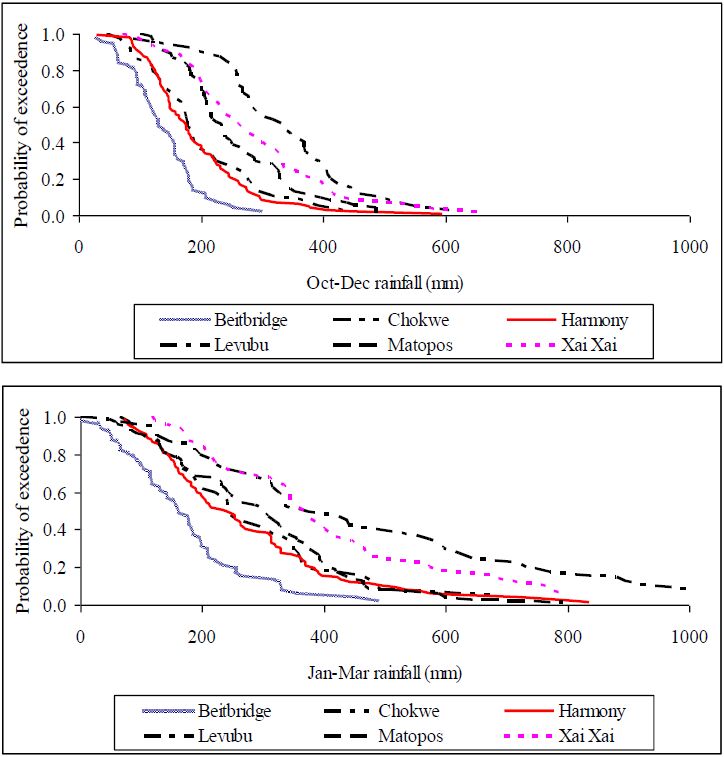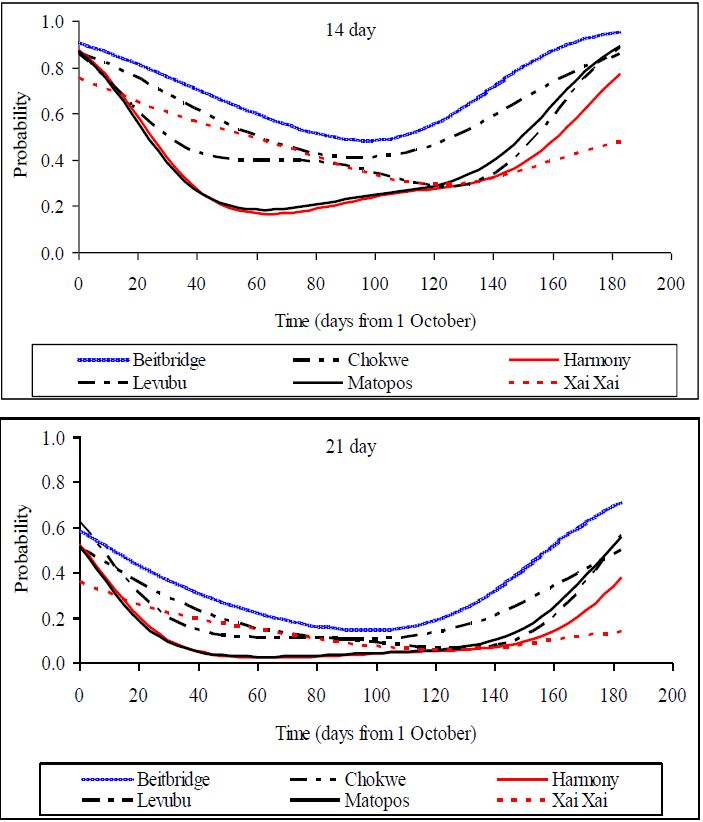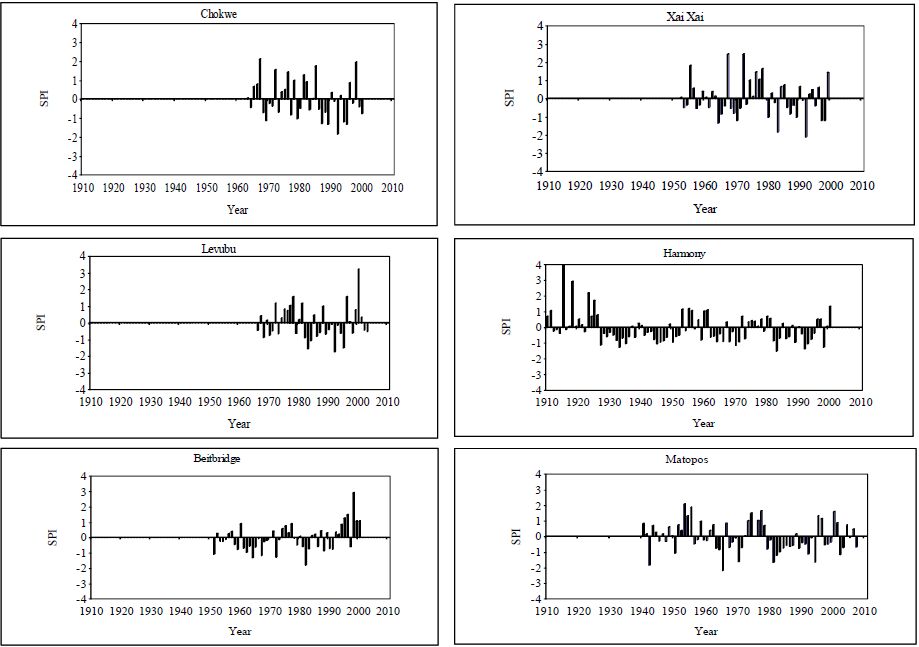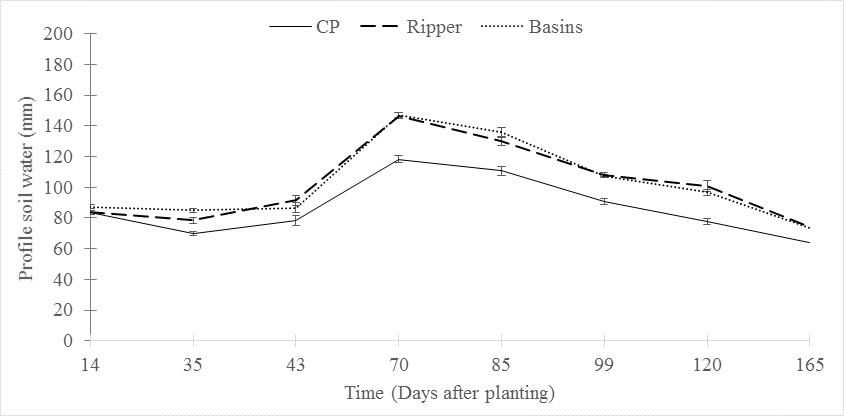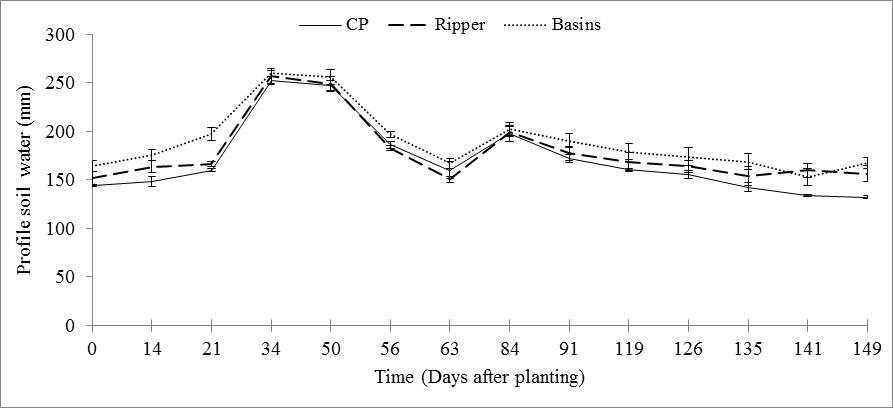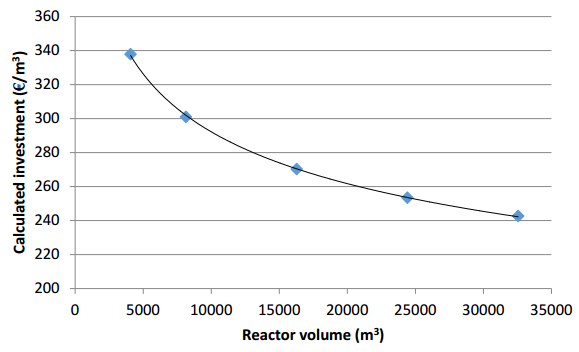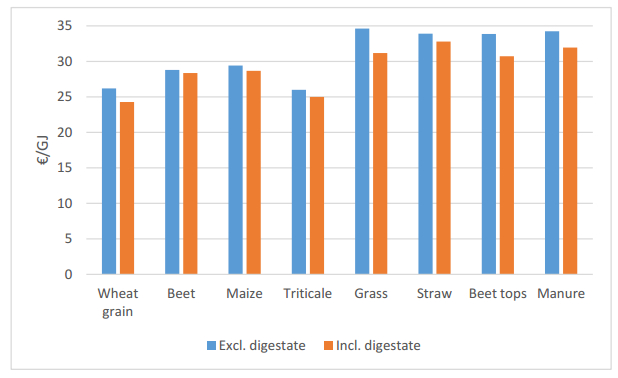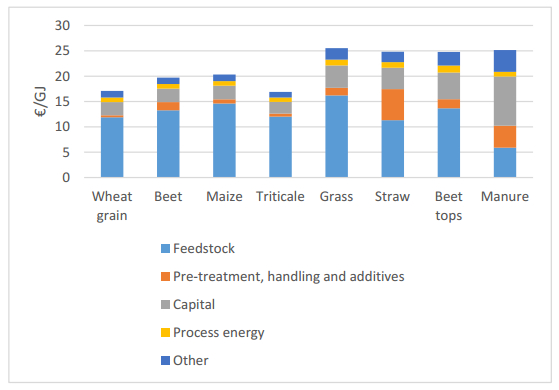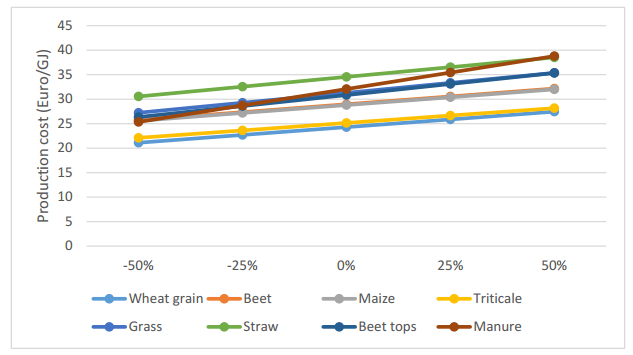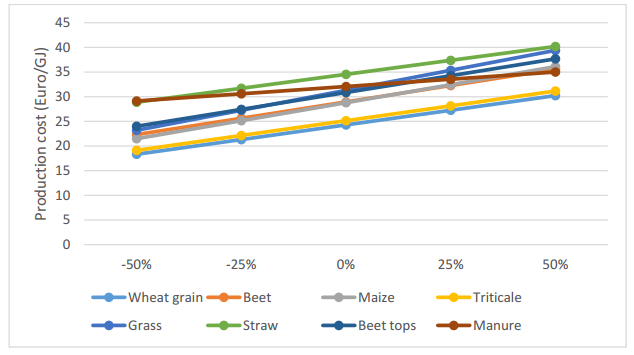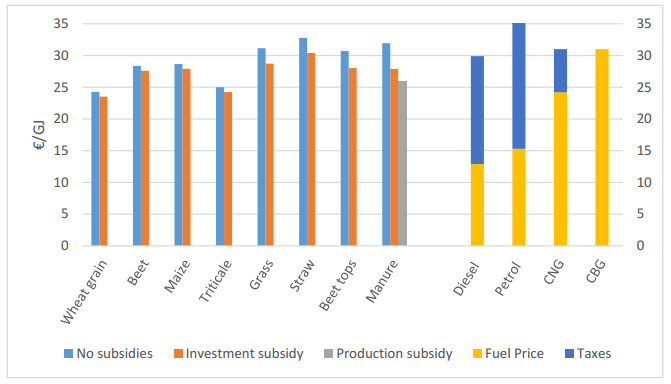1. Introduction
Rainfed agriculture accounts for more than 95% of the land used for staple food production in Sub-Saharan Africa [1]. It is projected that rainfed farming will contribute 40% of growth in cereal production by 2021-2025 [2]. In the Southern African Development Community region, the human population is growing at 2.4% per annum while crop output from the smallholder farming sector is declining [3]. While food imports may fill the growing demand gap in the short term, these trends and the predominantly subsistence farming and poverty status of the smallholder sector foretells of a growing food crisis for the rural-based communities in the region. It is therefore imperative that crop production in smallholder systems be improved in order to meet the food demand of the ever increasing human population.
The objective of improving household food security through uptake of crop improvement technologies has been elusive due to the risky nature of the semi-arid rainfall [4,5]. Crop production in semi-arid environments is heavily dependent on in-season spatial and temporal distribution of rainfall [6]. The crop growing period typically extends from November to April and during this period rainfall normally occurs as short duration, heavy convective storms covering a few square kilometers [7,8]. Rainfall events are poorly distributed during the growing period, taking more than three weeks between successive rainfall events in some seasons [9]. Such mid-season dry spells are now a characteristic feature of the semi-arid parts of southern Africa [5,10]. The impact of such dry spells on smallholder crop production is sometimes more severe than that of drought [11,12].
The high spatial and temporal variability of in-season rainfall poses a major threat to rainfed cropping in the Limpopo Basin of southern Africa. Coefficients of variation for seasonal rainfall in Southern Africa range from 20 to 40%, increasing as seasonal rainfall amounts decrease and are reported to be the highest in sub-Saharan Africa [4,9,13]. Statistically, complete crop failure in semi-arid areas can occur once every 10 years [14,15]. Severe crop yield reductions due to mid-season dry spells can occur once or twice every five years in semi-arid areas [14]. In semi-arid parts of East Africa there is a 70% chance of a dry spell lasting more than 10 days occurring during the flowering period of maize [16]. It is possible that the same phenomenon applies in semi-arid Southern Africa. It is therefore important to know the chances of experiencing droughts and mid-season dry spells during the growing season in an environment where the greatest proportion of farmers depend on rainfall for crop and livestock production.
Soil water management in rainfed agriculture has the potential of reducing the negative impact of mid-season dry spells in semi-arid environments [17,18,19]. Soil water conservation can be achieved through various conventional and reduced tillage systems. Soil is the medium for water storage and supply to growing crops in farming systems, and sustainable soil management is therefore critical in farming systems [20,21,22,23]. Minimum and zero tillage practices have been used for better soil management and as in-situ soil water conservation strategies [24,25,26]. Ex-situ rainwater management techniques that complement soil water conservation practices applied to the cropping fields, have also been tested on smallholder farms [27,28,29,30].
The effects of conventional moldboard ploughing, mulch ripping and no till tied-ridging on soil water loss from fields was evaluated in Zimbabwe [23,31]. Mulch ripping gave higher soil moisture in the topsoil especially at the beginning of the cropping season. In semi-arid southern Zimbabwe, Mupangwa et al. observed that reduced tillage practices such as basins and ripper, when combined with mulching using crop residues, conserved soil water on sand and clay soils during the growing season [32]. Higher crop yields, increased seasonal water use and water productivity can be achieved by using in-field rainwater harvesting techniques under semi-arid conditions of southern Africa [33]. Under the semi-arid conditions of East Africa, increased maize yields under conservation tillage and improved soil fertility management was recorded on smallholder farms [27].
Our study aimed at assessing the trends in growing season, dry spells and drought patterns in parts of the Limpopo River Basin of southern Africa. We also sought to assess the potential of reduced tillage systems that are being promoted in southern Africa on soil water patterns under semi-arid conditions. An extensive analysis of long term daily rainfall from Mozambique, South Africa and Zimbabwe was conducted to characterize the contrasting rainfall environments within the Limpopo Basin and assess the relative variability and implied risks for crop production in the river basin. We hypothesized that there is a high risk in rainfed crop production in the Limpopo Basin owing to low and variable seasonal rainfall, frequent in-season dry spells, and variable length of growing season. Our second hypothesis was that reduced tillage systems that are being promoted can conserve soil water and therefore reduce the risk of crop failure due to dry spells and droughts. The objectives of this study were to (1) characterize the rainfall and growing season patterns experienced by smallholder farmers, and (2) measure soil water dynamics in ripper and basin tillage systems being promoted in the semi-arid Limpopo Basin of southern Africa.
2. Materials and Methods
2.1. Characteristics of the Limpopo Basin in southern Africa
The Limpopo Basin forms a drought corridor in southern Africa [11], stretching from Botswana to Mozambique through northern South Africa and southern Zimbabwe (Figure 1). The river basin lies between 20 and 26°S, and 25 and 35°E, and covers 412,938 km2 across the four countries [34]. Rainfall is seasonal, exhibiting high inter-annual variability with 95% of it occurring between October and March. Evaporation varies from 1600 mm/year to more than 2600 mm/year and it is high even during the rainfall season [34]. Daily evaporative losses of 5 to 8 mm/day have been recorded in some parts of the Limpopo Basin [1,35]. Daily summer temperature may exceed 40 °C while winter temperatures can go below 0 °C. The predominant soil types include luvisols and leptosols found in Zimbabwe and Botswana, regosols in South Africa and, arenosols and solonetz in Mozambique [34]. Pockets of vertisols and nitisols occur in some parts of the river basin. The major agricultural activities include growing of drought tolerant varieties of maize, sorghum and pearl millet, and livestock rearing. Total cropping area in the Limpopo Basin averages 2.9 million hectares with 91% of it being under rainfed conditions [36].
The stations chosen in this study included Beitbridge in southern Zimbabwe which is very dry and suitable for livestock rearing and production of a narrow range of crop types. Chokwe and Xai Xai in Mozambique experience coastal effects of the Indian Ocean and are suitable for both cropping and livestock production. Levubu in South Africa and Matopos in south-western Zimbabwe represent the wetter parts of the Limpopo Basin and are more suitable areas for a wider range of smallholder farming activities compared to the other sections of the river basin.
2.2. Meteorological stations in the Limpopo River Basin
Meteorological stations that lie within the Limpopo Basin in Mozambique (Chokwe and Xai Xai), South Africa (Harmony and Levubu) and Zimbabwe (Beitbridge and Matopos) were selected for analysis of daily rainfall data collected over varying periods. Daily rainfall data were obtained from the Meteorological Services departments in each country. The geographical descriptions and periods of available data for each meteorological station are given in Table 1.
Table 1. Locations of the different meteorological stations on the Mozambique, South Africa and Zimbabwe parts of the Limpopo Basin, southern Africa.
| Country | Station | Latitude | Longitude | Altitude (m asl) | Data period |
| Mozambique | Chokwe | -24°33' | 33°00' | 33 | 1962–1999 |
| Xai Xai | -25°03' | 33°38' | 4 | 1952–1989 |
| South Africa | Harmony | -24°11' | 30°32' | 517 | 1910–2000 |
| Levubu | -23°08' | 30028' | 706 | 1966–2004 |
| Zimbabwe | Beitbridge | -22°22' | 30°00' | 462 | 1951–2001 |
| Matopos | -20°38' | 28°50' | 1347 | 1940–2007 |
| *asl = above sea level |
2.3. Seasonal rainfall distribution
In-season rainfall patterns normally vary between the first and second halves of the growing season. To assess the rainfall pattern in the two halves of the growing season in the Limpopo Basin, the rainfall season was divided into two; the first half covering the October to December (OND) period and second half starting in January and ending in March (JFM). Three monthly rainfall totals were used to derive the probability of exceedance distribution functions for each half of the growing season.
2.4. Growing season patterns
The start and end of the growing season were defined as;
· Start: the first day after 1 October when the rainfall accumulated over 1 or 2 days is at least 20 mm and no dry spell of more than 10 days within the following 30 days [37].
· End: the last day before 30 June that receives 10 mm or more rainfall.
The cut off point for end of growing season catered for late maturing or late planted crops. After 1 June the air temperature normally drops quite significantly [34] and crop growth rate is slowed dramatically [38,39]. Smallholder farmers also consider 10 mm as the minimum exploitable rainfall amount in their cropping systems [6]. Using the above definitions, Instat Statistical programme (Version 3.33) [40] was used to analyze the daily rainfall data for start and end of the growing season.
2.5. Dry spells patterns
Daily rainfall data for each meteorological station was fitted to the simple Markov chain model [41]. The Markov chain model was run to determine probability estimates of getting 14 and 21 day dry spells within 30 days following a rainy day based on the July to June calendar. A rainy day was defined as a day that receives 5 mm or more of rainfall in 24 hours [40]. The analyses were performed using Instat Statistical Programme (Version 3.33) [40].
2.6. Standardized Precipitation Index (SPI)
To assess the trends in drought at each station throughout the periods under review, standardized precipitation indices for each station were calculated using the following procedure outlined by Le Barbe et al. [42]:
|
SPI = (P-M) / S Equation 1
|
where
P is total annual rainfall for each year in the data series,
M is mean rainfall for the data series and
S is the standard deviation for the data series. The categories in
Table 2 were adopted for classifying each year in the data series according to wetness and dryness.
Table 2. Drought classification indices (adapted from [43]).
| SPI value | Drought category |
| 2.00 and above | Extremely wet |
| 1.50 to 1.99 | Very wet |
| 1.00 to 1.49 | Moderately wet |
| -0.99 to 0.99 | Near normal |
| -1.00 to -1.49 | Moderately dry |
| -1.50 to -1.99 | Severely dry |
| -2.00 and below | Extremely dry |
2.7. Soil water dynamics under reduced tillage systems
During the 2006/07 and 2007/08 seasons, soil water measurements were taken using the micro-gopher capacitance probe at on-farm and on-station experimental sites (micro-gopher sensor type). At each experimental site three sampling positions in each tillage treatment were used and depth of access tubes averaged 0.6 m. Soil water was measured at 0.1 m depth increments after planting and before harvesting the maize crop grown at all sites in both seasons. Soil water content in millimeters was determined by multiplying volumetric water content by thickness of each layer from which soil water was measured [44].
3. Results and Discussion
3.1. Seasonal rainfall patterns in the Limpopo Basin
The Limpopo Basin is characterized by a wide range of seasonal rainfall amounts ranging from a low of 316 mm at Beitbridge (462 m asl, 30°00ʹE) to a high of 813 mm at Levubu (706 m asl; 30°28ʹE) (Table 3). Generally the JFM period contributes more rainfall during the crop growing period in all three countries offering a good opportunity for crops to reach maturity if planting is done on time in the November-December period. Results from southern Africa have shown that late planting due to delayed start of rains can result in significant yield reductions or total crop failure [5,45,46]. The wetter JFM period can be attributed to the influence of the Inter-Tropical Convergence Zone (ITCZ) and the associated air masses [10]. During the JFM period the ITCZ often lies over Mozambique and northern Zimbabwe resulting in more rainfall during the second half of the growing season. In both halves of the growing season the risk of low rainfall, hence soil moisture deficits, decreases as one moves eastwards into Mozambique, southwards into South Africa and north-west towards Matopos from Beitbridge (Figure 2). Moist winds blowing inland from the Indian Ocean influence rainfall patterns with the effect of the ocean on rainfall weakening as one move westwards [47,48]. Rainfed cropping is therefore less risky in the lower Limpopo section of Mozambique compared to the other parts of the Limpopo Basin.
Table 3. Characteristics of the first and second halves of the growing season at stations lying on the Mozambique, South Africa and Zimbabwe sections of the Limpopo Basin.
| Station | Period of season | Mean (mm) | CV (%) |
| Chokwe | Oct–Dec | 192 | 48 |
| Jan–Mar | 263 | 53 |
| | 455 | |
| Xai Xai | Oct–Dec | 279 | 44 |
| Jan–Mar | 379 | 48 |
| | 658 | |
| Harmony | Oct–Dec | 191 | 46 |
| Jan–Mar | 274 | 60 |
| | 465 | |
| Levubu | Oct–Dec | 333 | 33 |
| Jan–Mar | 480 | 69 |
| | 813 | |
| Beitbridge | Oct–Dec | 140 | 42 |
| Jan–Mar | 176 | 61 |
| | 316 | |
| Matopos | Oct–Dec | 248 | 38 |
| Jan–Mar | 291 | 53 |
| | 539 | |
| CV = coefficient of variation |
Despite having more rainfall than the first half of the season, the JFM period exhibits high rainfall variability within the Limpopo Basin (Table 3). However, differences in rainfall variability between OND and JFM periods decrease as one moves towards the Indian Ocean as illustrated by Chokwe and Xai Xai stations. It is apparent from this analysis that blanket recommendations on soil water management techniques, crop species and varieties, and soil fertility management options are not appropriate in the Limpopo Basin. For example smallholder farmers in Beitbridge, the most arid section of the Limpopo Basin explored in this study, would require more accurate weekly and fortnightly rainfall forecasts compared to Xai Xai in Mozambique and Levubu in South Africa. In addition to rainfall forecasts smallholder farmers in Beitbridge would require more robust soil water management techniques and, short season and drought tolerant cereal and legume varieties. Soil water conserving practices such as conservation agriculture (CA) have the potential of reducing the impact of dry spells on smallholder cropping systems through water conservation [49,50]. Combining in-field practices such as CA with ex-situ rainwater harvesting techniques [27,28,51] could buffer smallholder cropping systems against mid-season dry spells which are now a common feature in southern Africa [5].
3.2. Growing season patterns in the Limpopo Basin
The Mozambique stations experience longer growing seasons while the Zimbabwe part of the Limpopo Basin has the shortest growing seasons (Table 4). Smallholder farmers in the lower section of the Limpopo Basin such as Xai Xai stand a better chance of getting a harvest if planting is delayed in the OND period because of a longer and less variable growing season. Low lying coastal areas receive moist air from the east and south of the Limpopo Basin giving rise to a better rainfall distribution and longer growing season [8]. The beginning of the growing season is more variable than its end in Mozambique compared to South Africa and Zimbabwe. The analysis of the historical rainfall data indicated that there are some growing seasons that end as early as February. Abrupt ending of the growing season has been reported in other semi-arid parts of sub-Saharan Africa [11]. This implies that timeliness of activities such as land preparation and planting are critical in the first half of the growing season if crops are to reach maturity. A study conducted in Zimbabwe showed that maize yield can be reduced by 5% for each week’s delay in planting [52]. Rainwater harvesting techniques will play a crucial role in such growing seasons in the semi-arid Limpopo Basin. Rainwater harvesting can play a significant role in reducing production risk in smallholder cropping systems [51]. The high variability in the length of growing season further confirms the need for adopting production risk mitigating measures such as growing drought tolerant crops, staggered planting and soil water management.
Table 4. Median start, end and length of the growing season based on historical daily rainfall data obtained from six meteorological stations in the Limpopo Basin, southern Africa.
| Station | Median start date | S.D. (days) | Median end date | S.D. (days) | Length of season (days) | S.D. (days) |
| Chokwe | 16 November | 36 | 2 May | 30 | 173 | 48 |
| Xai Xai | 26 October | 21 | 11 June | 17 | 223 | 20 |
| Harmony | 18 November | 31 | 13 April | 30 | 142 | 43 |
| Levubu | 19 November | 22 | 11 May | 35 | 179 | 45 |
| Beitbridge | 7 December | 31 | 25 March | 29 | 99 | 30 |
| Matopos | 2 December | 30 | 29 March | 31 | 110 | 37 |
| S.D. = standard deviation |
3.3. Dry spells pattern in the Limpopo Basin
The Limpopo Basin is prone to 14 and 21 day dry spells during the crop growing season (Figure 3). The November-December period, between days 32 and 92 (Figure 3), is a critical time for smallholder farmers to plant as the chances of experiencing 14 and 21 day dry spells decrease quite rapidly in the Limpopo Basin. At the most the arid station in the Limpopo Basin, illustrated by Beitbridge in southern Zimbabwe, the chances of 14 day dry spells decrease from 67% in November to 53% in December while 21 day dry spells decrease from 28 to 17% during the same period. This gives smallholder farmers an opportunity to plant when soil moisture is adequate and get the crops established before the end of December. Dry planted crops such as sorghum and pearl millet stand a better chance of getting well established than maize and grain legumes which are often rain planted. Smallholder farmers in semi-arid parts of southern Africa such as the Limpopo Basin tend to use staggered opportunistic plantings to spread risks associated with dry spells [53].
Although the total seasonal rainfall data indicated a wetter JFM period relative to OND (Figure 2 and Table 3), the risk of experiencing 14 and 21 day dry spells increases quite rapidly in the January-February period (Figure 3). This coincides with the critical flowering and grain filling stages of cereals commonly grown in this part of southern Africa. Planting in January, as observed in some parts of the Limpopo Basin [54,55], increases the chances of crops failing to reach maturity due to soil water deficits as chances of dry spells increase dramatically in the JFM period. Lately total crop failure has become a common characteristic of rainfed smallholder crop production in some parts of the Limpopo Basin [5]. The possibility of experiencing a wetter JFM period based on rainfall totals and the increased chances of getting dry spells during the same period suggests poor distribution of rainfall events during the second part of the growing season. Seasonal rainfall distribution tends to have a more significant impact on rainfed crop production than the total rainfall received during the season [9,56]. A combination of drought tolerant crop varieties, timely planting, good crop husbandry, and soil water conserving practices such as CA and ex-situ rainwater harvesting [46,51,57,58] could reduce crop production risk for smallholder farmers in the Limpopo basin.
The trend in 14 and 21 day dry spells clearly demonstrates that rainfed agriculture will continue to struggle if smallholder farmers do not adopt the mitigating interventions that have been developed for the region. Seasonal forecasts, particularly the weekly and fortnightly forecasts, have a critical role to play in aiding farmers to make tactical within-season decisions such as planting, weed control and fertilizer application [59,60,61]. The long range seasonal forecasts will aid farmers to decide on crop types and varieties [8], soil water and fertility management options, as well as the quantities of different farming inputs for the approaching season.
3.4. Standardized precipitation indices in the Limpopo Basin
Historically there has been a consistent trend of aridity in the Limpopo Basin stretching from the 1960s to the 1990s based on the daily rainfall data used in this study (Figure 4). In fact, data from Harmony station in South Africa indicate the aridity trend stretching back into the 1930s (Figure 4). The Limpopo Basin experienced severe droughts during the 1960s, 1980s and 1990s even at Xai Xai which has the Indian Ocean affecting its rainfall pattern more than the other locations. These droughts were associated with the El Nino-Southern Oscillation (ENSO) phenomenon with warm ENSO events often associated with dry conditions in southern Africa [59,62]. The impacts of the ENSO phenomenon continue to be felt in the Limpopo basin and the whole of southern Africa [63,64]. Within the Limpopo Basin the severity of droughts experienced varied with location and the 1991/92 drought was the most severe in most of the locations reviewed. Rainfall will continue to decrease with variations from region to region in southern Africa [65,66].
The drought trends further highlight the fact that rainfed agriculture is risky in the Limpopo Basin and appropriate drought and dry spell mitigating interventions that have been developed or are still being tested need to be used on the smallholder farms. For smallholder farmers in the Limpopo Basin it is imperative that they adopt water and non-water related risk reducing farming practices such as use of in-situ and ex-situ rainwater harvesting, conservation agriculture, and improved drought tolerant crop species. In addition, there is need for improving the general agronomic practices such as time of planting, weed control and soil fertility management in order to improve rainwater productivity which currently stands at less than 30% of the rainfall received in sub-Saharan Africa [67]. Diversification of farming enterprises at farm scale will also potentially buffer smallholders against the vagaries of climate change and variability.
3.5. Soil water patterns in conventional ploughing and reduced tillage systems
Basins and ripper tillage systems retained more soil water than the conventional system at the on-farm experimental sites (Figure 5). During the maize crop flowering and grain filling stages, ripper system had 17-29% and basin had 18-24% more soil water in the 0-0.60 m profile than the conventionally ploughed system. Higher soil water content in reduced tillage related systems was consistent with previous studies under different agro-ecologies of southern Africa [32,33,63]. Planting basins and the furrows created by ripping collect rainwater and gives it more time to infiltrate into the soil. This leaves the soil in the 0-0.60 m profile of basin and ripped furrow moist for much longer than in the conventional ploughing system. A similar trend was observed at the clay loam Matopos site (Figure 6). During maize flowering to grain filling stages, ripper system had 2-9% and basins had 4-12% more soil water than the conventional ploughing system. Such higher soil water storage in the ripper and basin tillage systems could bridge the soil water deficits which occur during mid-season dry spells in smallholder cropping systems in semi-arid environments. The basin tillage system creates more soil surface depression which collect rainwater and gives it more time to infiltrate into the soil [64,68]. Mid-season dry spells reduce crop yields significantly in southern Africa and their frequency continues to increase in the face of climate change [5,10,11].
4. Conclusion
This study showed that the Limpopo Basin has a wide range of rainfall patterns with the risk of rainfed agriculture depending on location in the basin. The second half of the growing season receives more rainfall than the OND period in the Limpopo Basin. However, rainfall variability in all sections of the Limpopo Basin is high during the same period. The length of the growing season varies considerably in the Limpopo basin, highlighting the fact that blanket recommendations for soil water management interventions that mitigate against adverse climatic conditions are not appropriate for rainfed smallholder agriculture. The Indian Ocean has a strong influence on coastal sections of the Limpopo Basin as demonstrated by Xai Xai station resulting in longer growing seasons, less variability in start and end of growing season. Our results confirm high rainfall variability and frequent dry spells. The chances of experiencing 14 and 21 day dry spells during the cropping period are high in areas far from the Indian Ocean. In addition to in-season dry spells the region is prone to drought whose severity varies considerably across the river basin. Basin and ripper tillage systems have a higher potential of retaining soil water which could benefit crops than the conventional ploughing system. Future studies could focus on assessing the efficiency of soil water utilization by crops under different soil management practices. More research could also focus on farm scale evaluation risk mitigation strategies involving crops and livestock for the smallholder farming systems of the Limpopo River Basin.
Acknowledgements
This paper is a contribution to the WaterNet Challenge Program Project 17 “Integrated Water Resource Management for Improved Rural Livelihoods: Managing risk, mitigating drought and improving water productivity in the water scarce Limpopo Basin”. The authors acknowledge the meteorological offices of Mozambique, South Africa and Zimbabwe for providing daily rainfall data.
Conflict of interest
The authors declare no conflict of interest in this publication.










 DownLoad:
DownLoad: 